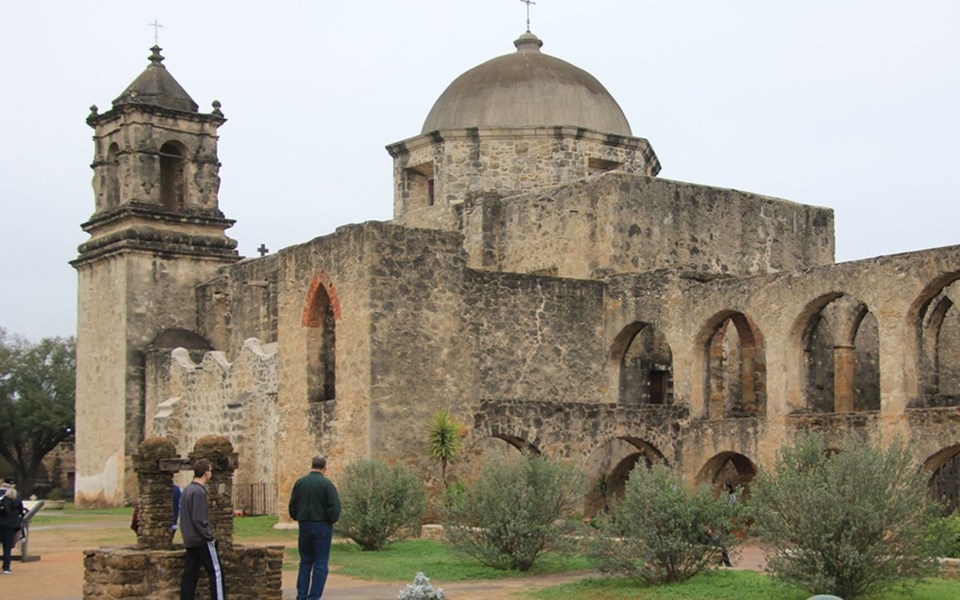
Every place has its creation myth, and in Texas it's all about the Alamo. It was there, in the middle of what is now downtown San Antonio, that an armed band comprised mostly of illegal immigrants fought—and lost in a blood bath—to the superior force of the Mexican army in 1836.
The defeat was a temporary setback for those Texicans and Tejanos—Anglos and Hispanic respectively—who wanted independence from Mexico. Soon after, they wrested military control of the territory, which then became the Republic of Texas.
Maybe the Mexicans should have built a big, beautiful wall.
We had driven into downtown San Antonio from a cheap motel on the edge of the city, technically the seventh largest in the United States although only 24th among metropolitan areas. Even in a brief visit San Antonio revealed itself to have good food and at least a couple of good used bookstores. We all have our metrics for evaluating the worth of a destination.
San Antonio also has the Riverwalk, a spectacle unto itself located just blocks from the Alamo. The narrow walkways along Venetian-like canals of water provide access to restaurants, stores, and hotels. It's a place to see and to be seen.
Despite these charms, we would have instead been in Austin, 90 minutes to the north, but for the South by Southwest conference that had just gotten underway. Even Motel 6, the budget chain, was charging US$309.
Most of the 14 or so Democratic presidential candidates announced as of early March were there, Washington Governor Jay Inslee talking about climate change and Massachusetts Senator Elizabeth Warren outlining how she would contain the unhealthy power of Apple, Facebook and other big, strapping tech companies. Former Colorado Governor John Hickenlooper was there, too. He says it's crazy to try to oust the 10 to 11 million people who are in the United States illegally.
That takes us back to the Alamo. It was a mission, one of many built along the San Antonio River by Spanish colonizers. The Spanish used the missions to recruit the native Americans to Catholicism and also a different way of life. We tarried for a morning at one, the Mission San José, the best preserved. It had a church, of course, but also a courtyard enclosed by walls of adobe. There, local natives had learned European religion and agriculture. They were also given protection from attacks from Comanche and Apache.

It was a devil's bargain. The local bands lost their own religions and their own languages. Some nearly lost their tribal names. They also lost their lives in droves after being exposed to smallpox and other diseases to which they had no immunity.
Borders work better for some purposes than others.
At the time, France and England were also partitioning North America. By 1836, the pivotal year here, the United States was independent of England, Mexico had been birthed from Spain, and the Texians and Tejanos wanted out of Mexico. Defeat at the Alamo created martyrs, who inspired the triumph soon after and hence creation of the Republic of Texas.
At least on paper, it included not only what we thought of as Texas today, but bigger—with a horn sticking up through Colorado and into Wyoming. Had those boundaries prevailed, Aspen, Breckenridge and Vail would today be part of Texas.
Instead, Texas was trimmed when admitted to the United States in 1845. It remained big, and still is, second only to Alaska among states. In population, its 29 million are second only to California's 39 million. (British Columbia has five million, but 944,735 kilometres, compared to 695,662 square kilometres for Texas).
Big and burly, Texas has long punched above its weight in U.S. politics. The Alamo explains much of how Texas views itself. Texas doesn't like taking orders, and it believes devoutly in the sanctity of spilled blood. Statues in front of the Alamo show men with guns but also a buxom woman in robes, the inscription below praising the "heroes who sacrificed their lives at the Alamo" to enable the founding of Texas.
It's a myth, not because it's a false, but a myth in its storytelling sense. It's a state apart. It even has its own electrical grid.



